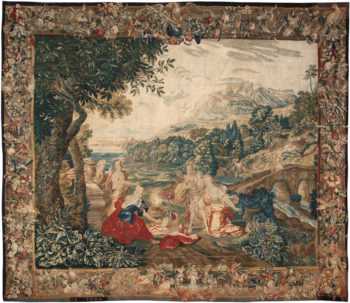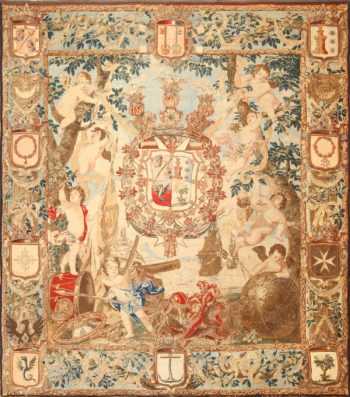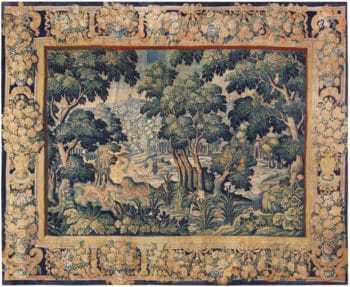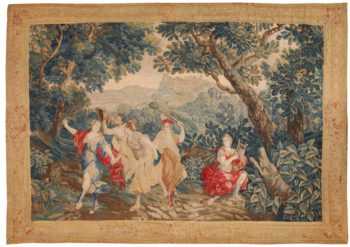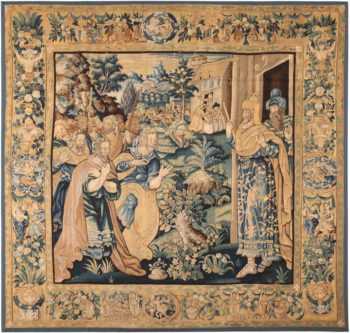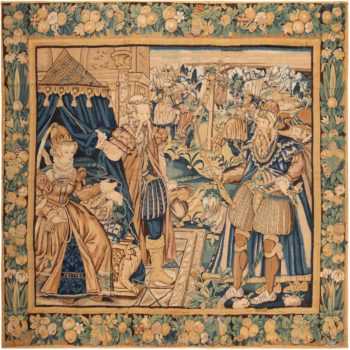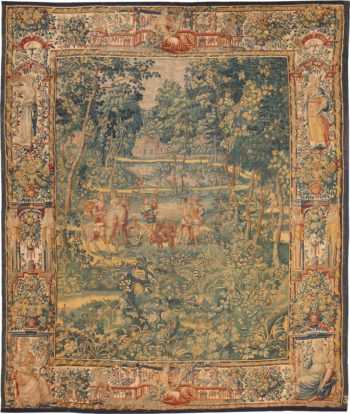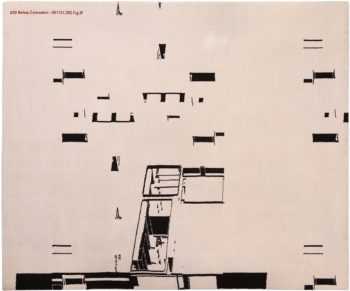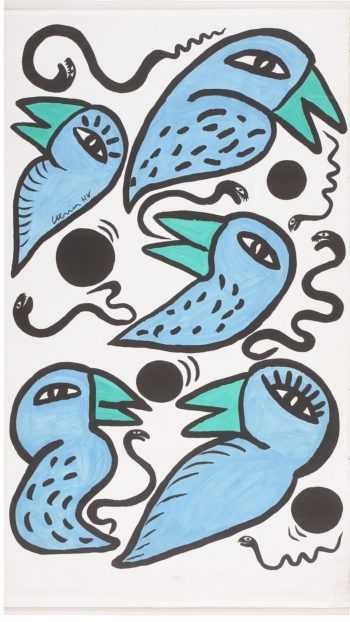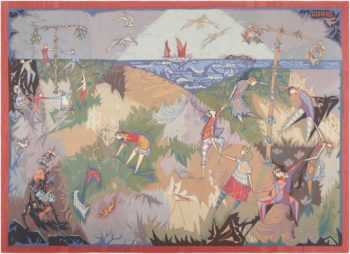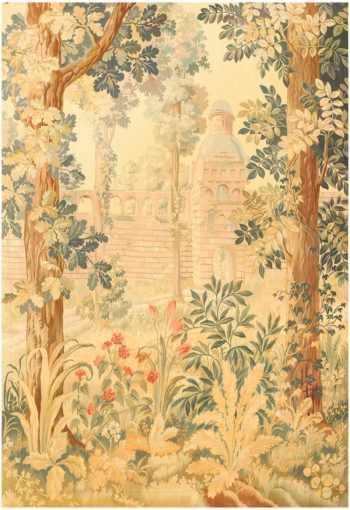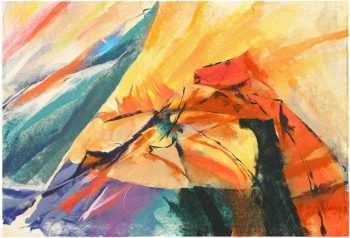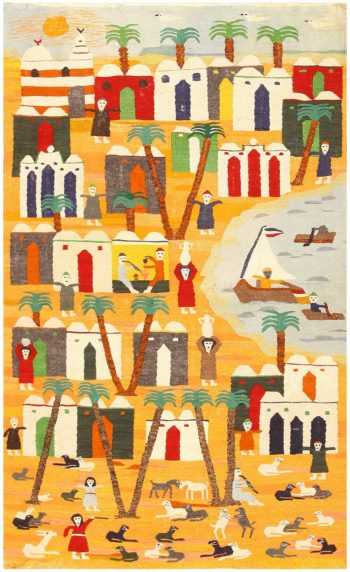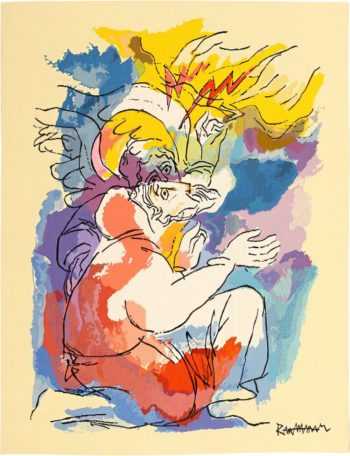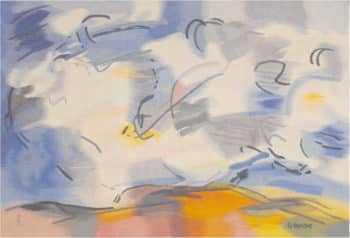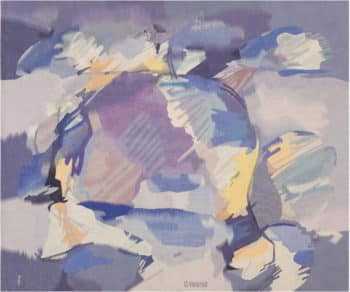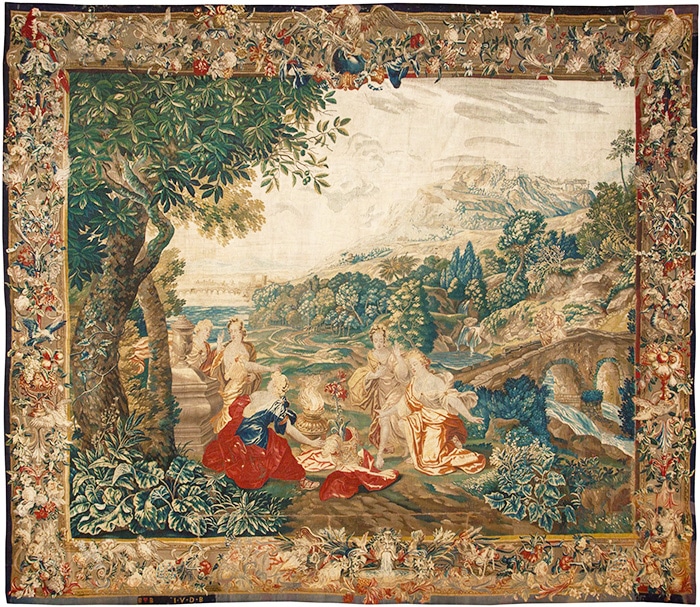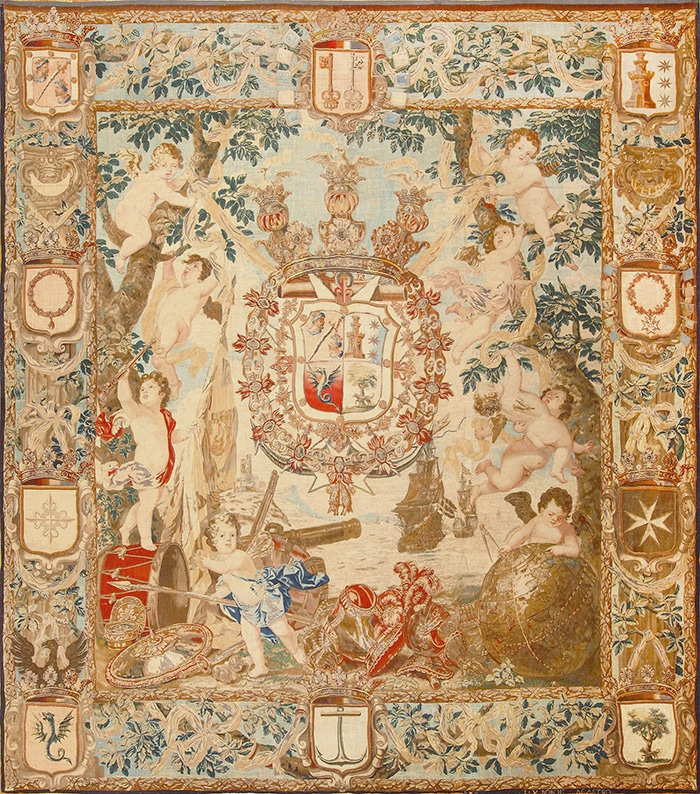Tapestry
View our vintage and antique Tapestries for sale below:
-
Large Italian Wall Tapestry 49136
$36,000.00Size: 11 ft x 19 ft (3.35 m x 5.79 m) -
Rare Antique 17th Century Flemish Tapestry 45666
Size: 11 ft 8 in x 13 ft 7 in (3.56 m x 4.14 m) -
Antique Flemish Heraldic Tapestry of a Spanish Noble Admiral 2399
Size: 11 ft 10 in x 13 ft 3 in (3.61 m x 4.04 m) -
17th Century Antique French Silk And Wool Verdure Tapestry 72574
$68,000.00Size: 10 ft x 12 ft 10 in (3.05 m x 3.91 m) -
Antique 16th Century Biblical King Solomon And Queen Of Sheba Flemish Tapestry 72007
$69,000.00Size: 11 ft 4 in x 12 ft 10 in (3.45 m x 3.91 m) -
17th Century Antique French Silk And Wool Animal Design Verdure Tapestry 72572
$68,000.00Size: 10 ft x 12 ft 5 in (3.05 m x 3.78 m) -
Antique Italian Tapestry Depicting Caesar Augustus 47325
$65,000.00Size: 8 ft x 12 ft (2.44 m x 3.66 m) -
17th Century Wool and Silk Romantic Antique French Verdure Tapestry 70857
$79,000.00Size: 8 ft x 11 ft 4 in (2.44 m x 3.45 m) -
16th Century Silk And Wool Antique Flemish Old Testament Biblical Tapestry 72008
$78,000.00Size: 10 ft 8 in x 11 ft 3 in (3.25 m x 3.43 m) -
16th Century Antique Silk And Wool Biblical Flemish Jewish Purim Tapestry 72009
$56,000.00Size: 10 ft 2 in x 10 ft 9 in (3.1 m x 3.28 m) -
Refined 17th Century Wool and Silk Antique French Hunting Scene Verdure Tapestry 70856
$110,000.00Size: 8 ft 7 in x 10 ft 3 in (2.62 m x 3.12 m) -
17th Century Wool and Silk Antique French Tapestry 70858
$79,000.00Size: 8 ft 1 in x 9 ft 7 in (2.46 m x 2.92 m) -
Vintage Belgium Jan De Cock Art Rug 70733
$3,600.00Size: 6 ft 6 in x 8 ft (1.98 m x 2.44 m) -
Vintage Swedish Tapestry Rug 46828
$3,600.00Size: 5 ft x 8 ft (1.52 m x 2.44 m) -
Lars Gynning Mid Summer Dance Tapestry 46889
$48,000.00Size: 10 ft 8 in x 7 ft 9 in (3.25 m x 2.36 m) -
Antique Soft Floral American Tapestry 46939
$35,000.00Size: 4 ft 9 in x 6 ft 10 in (1.45 m x 2.08 m) -
Vintage Tapestry Rug “Horses in Gale” by Ana Piksiades 48165
$9,600.00Size: 4 ft 8 in x 6 ft 10 in (1.42 m x 2.08 m) -
18th Century Antique French Beauvais Tapestry 70734
$14,500.00Size: 4 ft 4 in x 6 ft 9 in (1.32 m x 2.06 m) -
Vintage Swedish Kilim Textile Art Pictorial Tapestry Rug 48251
$11,000.00Size: 4 ft 2 in x 6 ft 7 in (1.27 m x 2.01 m) -
Moses and Burning Bush Israeli Abraham Rattner Tapestry 48152
Size: 4 ft 10 in x 6 ft 4 in (1.47 m x 1.93 m) -
Was At Sea by Brita Molin Vintage Scandinavian Carpet 48514
Size: 9 ft 7 in x 6 ft 1 in (2.92 m x 1.85 m) -
Square Vintage Art Deco French Tapestry 48832
$12,500.00Size: 5 ft 9 in x 6 ft (1.75 m x 1.83 m) -
Artistic Vintage French Tapestry by Lars Gynning 72802
$8,250.00Size: 4 ft x 5 ft 10 in (1.22 m x 1.78 m) -
Abstract Modernist French Tapestry by Lars Gynning 72801
$8,750.00Size: 4 ft 10 in x 5 ft 9 in (1.47 m x 1.75 m)
Learn More About Antique Tapestries
Learn How To Hang A Tapestry Or Rug On The Wall
What Is A Tapestry?
A wall hanging tapestry, simply put, is a textile specifically designed and woven to portray an artistic scene with the intent of hanging it on a wall. Antique tapestries, those that were woven over 100 years ago, are highly sought after collectible items with examples displayed prominently in many museums around the world.
While some wall tapestries can date to the biblical era, most of the great examples known today are from the medieval or Renaissance periods of history. Nobility and wealthy patrons commissioned tapestries depicting scenes or images of importance. These weavings served as a large-scale mobile art piece which would have been displayed on the wall of a castle or home and was easily transportable from home to home.
Many of the surviving antique tapestries depict religious and / or historic events. For example, a king might have commissioned one with a scene depicting a great victory in battle. As the king moved to his various palaces or castles, the tapestry could be moved along with him as well.
Another example could be a religious weavings, commissioned by a religious institution and some would only be displayed at the church or cathedral during certain religious events. Other wall tapestries might display images of a family and those would usually depict the family’s coats of arms.
Antique tapestries vary in size, and range from items that would cover a single wall of a small room to major works that are massive in size. Some antique tapestry wall hangings are actually sets or a series of works on a common theme.
Weavers used the natural materials available at the time. Wool, cotton, silk and linen threads were dyed to the desired colors before weaving. Some tapestries also included gold and silver thread accents. Sadly enough, in the past, there were owners who destroyed some of these tapestries to recover the precious metals leaving fewer examples of this breathtaking form of the art.
A high quality example is largely thought of as a European form of textile art. Most of the major countries of Europe did produce these pieces with a highly developed art forms evident in Germany, Spain, Belgium, France and more. The weavers continue to produce works of textile art till this very day so not every example is an antique.
Antique Tapestries are perhaps the most venerable and highly prized medium of textile art. They have been woven almost from the beginning of weaving itself, and already in ancient times, this technique was adapted to pictorial compositions as well as ornamental designs. Antique Tapestries or ‘Woven paintings’ of this kind were known to the court arts of Egypt, the ancient Near East, and the Greeks and Romans as well. It was this ancient tradition that was passed down through the Middle Ages into the Renaissance and Baroque periods in Europe, where pictorial tapestry rugs became a medium of painting in its own right utilizing designs by all the great ‘Old Masters’. Nazmiyal is proud to offer a distinguished collection of such European antique tapestries whose historic importance or value is equal to their beauty and elegance as great works of art.
What is a tapestry used for?
A tapestry is a woven fabric that was created with the intent to hang on the wall as a work of textile art. While in ancient times, the Romans as well as the Greeks created tapestries as artworks for the wall, some ancient cultures, like the ancient Egyptian and Incas also wove tapestries with the intent of being used as burial shrouds.
What is the oldest known tapestry?
The earliest known tapestry was woven in linen and dates back to 1483 and 1411 BCE Egypt found When excavating the the tomb of Thutmose IV, three woven linen fragments were discovered in relatively good condition due the dry deserts climate in Egypt. Two fragments depict Egyptian pharaohs while the third fragment features hieroglyphs.
The Art of the Tapestry
The art of tapestry weaving is an exceptional art different than any other weaving art. Based on a design cartoon, the background, pattern, and every element is woven over a warp with weft threads. These threads conceal the entire warp when the piece is finished, and the warp only sometimes can be seen as parallel, vertical texture in the finished product.
Evolution of Tapestry Weaving
Early tapestries, from the Middle Ages, to the Gobelin tapestries of the 17th century, all the way up until the late 19th century, were made with thick warps and corresponding thick weft threads. These tapestries were often made heavy for a functional purpose: to be hung on chilly stone walls to keep out drafts and keep warmth inside. However, in the 20th century, silk started gaining more popularity, as opposed to other materials like wool. These thin tapestries are extremely fine and can have as many as 60 warp threads per inch.
The first known tapestry weaving was done in linen by the ancient Egyptians, as far back as 1483 BCE. However, it is impossible to identify for sure either when or where the first tapestries were made, as physical evidence is extremely rare and even then, worn and fragmented. There is scattered documentation of weaving such pieces throughout the very early years of history. Some of this includes in literature. The Odyssey describes a tapestry woven by Penelope that unraveled each night she waited for Odysseus. The Metamorphoses discuss the weaving looms used by Minerva and Arachne. These ancient literary descriptions give us some clue into what weaving these artistic pieces may have been like during those times.
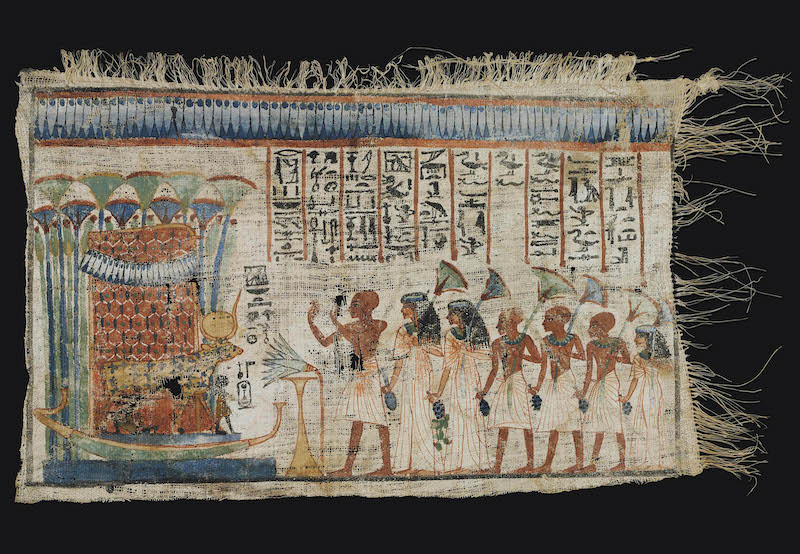
An example of an early Egyptian tapestry on linen.
Tapestry Weaving Technique
There are many different ways a tapestry can be woven. It may be woven on either a vertical or horizontal loom. The vertical looms, naturally, had bars at the top and the bottom, with the warp threads held vertically between these bars. This vertical loom is also referred to as a “high warp” loom.
The horizontal looms, conversely, has warp threads stretched horizontally between two table-height poles. These poles are connected to a treadle, which is a contraption that the weaver can step on to depress either the odd-numbered or even-numbered warps, allowing the bobbin to easily pull the weft threads through. The horizontal loom is also referred to as a “low-warp” loom.
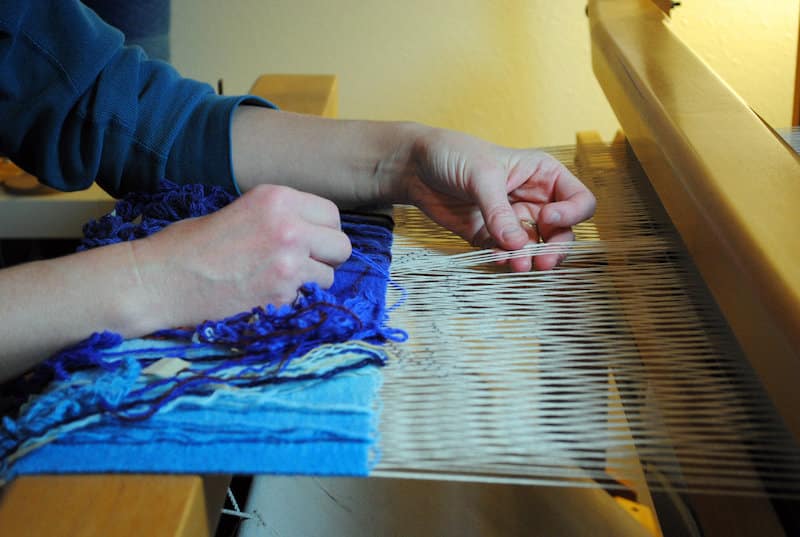
A weaver working on a horizontal loom on a table.
Interesting to note is that with both types of looms, the weaver works from the back of the tapestry. This means that with the vertical loom, the weaver can simply walk to the other side of the loom to look at the front, but with the horizontal loom, the weaver must pick up the loom and turn it over to be able to see the front of the piece.
The horizontal loom is more commonly used, although the iconic Gobelin manufactory worked with vertical looms. Both types of loom allow for several weavers to work on them at once.
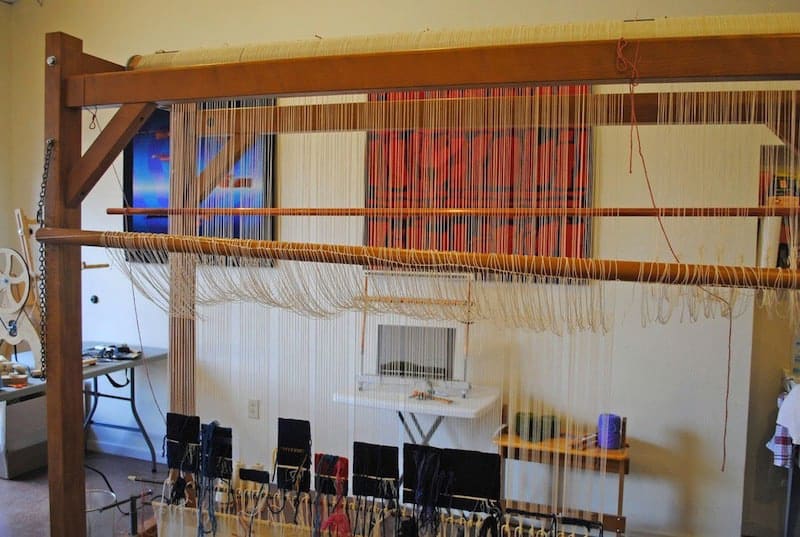
A vertical (high-warp) loom.
Another element of the weaving is the cartoon. The cartoon is a colored drawing done by a painter on a canvas the actual size that the piece would be. This was a reference for how it should look. Cartoons usually weren’t just used once, but many times and often by different weavers. When using a vertical loom, the cartoon is hung either beside or behind the weaver. Conversely, when a horizontal loom is being used, the cartoon is simply placed under the warp threads so it is easy for the weaver to follow.
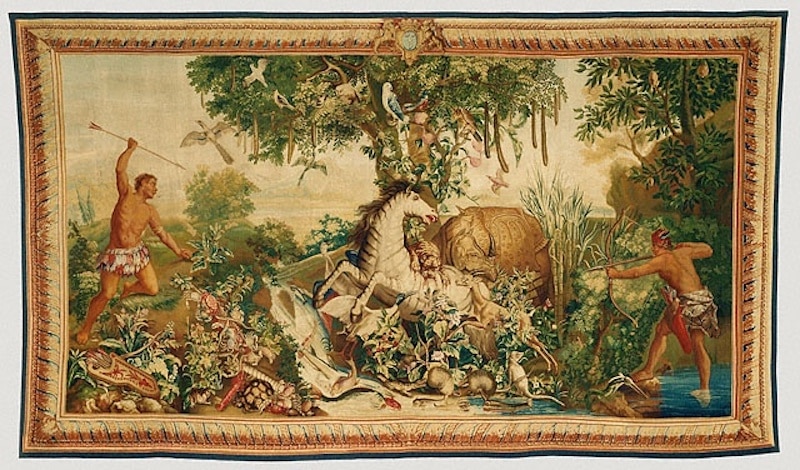
The Gobelin Indies tapestry series are all from the same cartoon, woven many different times.
As you can see, the weaving of these textile are pieces has been around for a very long time, perhaps even longer than we are aware of. It is an intricate technique that requires plenty of talent and patience, but creates a spectacular finished product to marvel at.
Introduction to the world of antique tapestry rugs
Antique tapestry rugs are highly treasured pieces of textile art that have been created since the beginning of the art of weaving. They are regarded as a prestige item to own and to use in the adornment of any room. The richness of the designs leads one to uncover new details every time they are viewed.
Antique tapestries can be considered a mobile piece of art that are easily transferred from one home to another. Some of the better known pieces were created by the French. One such example is the Bayeux tapestry that was created in the 11th century and that shows scenes of the Norman conquest of England. Also, during the 13th and 14th century, the church had created wall hanging textiles that depicted biblical events to illiterate the churchgoers.
Some of the oldest tapestries were woven textile reproductions of the works of prominent artists (some may even date back to biblical times).
What are antique tapestry rugs?
Antique tapestry rugs are examples of textile art that were created at least 100 years ago.
What is considered to be the golden age of tapestries?
The best known tapestries are associated with the Renaissance and later Medieval periods. In those times, wealthy people and royalty commissioned artists to capture events and scenes of religious and biblical topics that were important to them.
Who might have originally commissioned old tapestries?
A King might commission a tapestry to show the scenes of a battle he may have won and would then display the piece in his castle. Many religious institutions may have commissioned such pieces to be hung in a cathedral or church during specific religious events. In those times, a wealthy family may have also commission one to depict the family’s coat of arms.
What sizes are typical tapestries?
Tapestries vary in the size and don’t have a “standard” or “typical size“. Some examples can be large enough to cover just a small wall, while others may be massive works of art. Other tapestries may consist of a series of many pieces all based on a common theme.
What materials were used to weave tapestries?
Tapestry rugs were woven using many different materials. Cotton, wool, linen and silk threads were the natural materials available to weavers who created their pieces. They would dye threads of these fabrics prior to weaving them. In addition, some weavers included accents of silver and / or gold threads in their designs. Unfortunately, few of these gold and silver accented tapestries remain today because some were destroyed to recover the precious metal threads.
Do tapestry rugs have specific designs and patterns?
Tapestry rugs will depict a varied and wide range of designs and patterns. Some examples will feature artistic scenes that range from battles in action, hunting scenes, landscapes, biblical scenes and also various aspects of daily life. Others may depict pastoral and romantic scenes while others may feature events and people of historical significance.
Are tapestry rugs considered works of art?
Yes. For the most part, Tapestry rugs are considered collectors works of art. Many pieces are displayed in and part of museums determinant collections.
Do people use tapestry rugs in their homes?
Many people will buy tapestry rugs to used as decorative pieces for their homes. Many can bee seen in old castles of European royalty. More often than not, they are mounted on walls as artwork, and may even be used as upholstery.

Dining room interior design with an antique Flemish Tapestry
Can antique tapestry rugs be used on the floor?
Usually, antique tapestries are not created to be spread on the floor to be walked on. That said, we have seen people use them as area rugs or floor coverings and it is not as uncommon as one would think.
What is the oldest tapestry in the world?
Woven in Sweden during the Viking age, the oldest known example in the world is the Overhogdal tapestry.
This piece dates to about the 800 – 1100 AD. It is actually not one but a series of antique textiles / fragments that can be seen in a room that was designed especially for them in Jamtli. Other pieces can be seen in the Jamtland regional museum and Harjedalen in Ostersund, Sweden.

Oldest Tapestry In The World Overhogdal Tapestry
Where were most antique tapestry rugs made?
The most recognizable would probably be the antique Flemish tapestries that were woven in Belgium. That said, others were woven in many different places in the world. Many beautiful and iconic examples were woven in countries such as France, Italy and China among others.
What are the unicorn tapestries?
The unicorn tapestries (also refereed to as the Hunt of the Unicorn tapestries) are a series of seven pieces that were woven in metallic threads, silk and wool between the years 1495 and 1505. Perhaps some of the most recognizable antique tapestries in the world, they have been sparking much debate among scholars and art historians. Questions such as the identity of artists who designed them, the particular order in which they were meant to be hung and even the meaning behind the visual images remain. While highly debated, in 1942, James J. Rorimer suggested that the unicorn tapestries may have been commissioned to celebrate the 6 December 1491 marriage of Anne of Brittany’s marriage to the King of France – Louis XII.

“The Unicorn Is Found” Antique Unicorn Tapestries At The Cloisters NYC
Trend Alert: Hanging Wall Tapestries As Art
Newsflash — tapestries are trending! It’s been some 40 years since tapestries have been a trending item. Now, they’re reaching new horizons. This is a true comeback story of an old and sometimes under-appreciated art form that’s receiving a major makeover and a huge popularity boost.
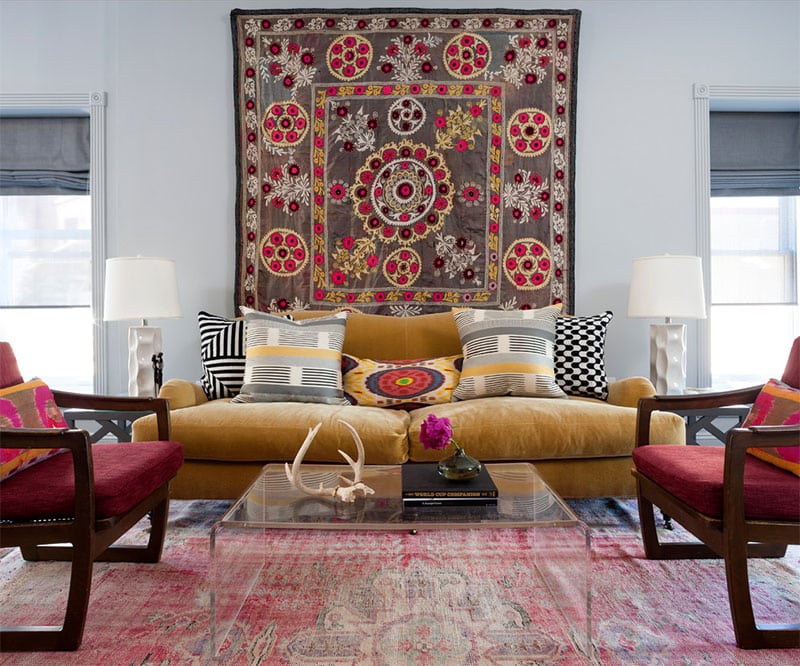
Modern Interior with Tapestry on Wall
Trendsetters in Paris welcomed the tapestry craze in 2013 by hosting an important and forward-thinking exhibition focusing on modern examples with an urban flavor. The Pompidou Center’s “Decorum” collection was the largest textile exhibit ever displayed at the Musee d’Art Moderne.
It included everything from Picasso carpets to modern tapestries depicting plush sneakers, a furry bathrobe and a supersized Welsh corgi. Smaller galleries in Germany, Italy and China are currently enjoying this “Neo Craft” movement that has brought new artists into the spotlight.
Around the world, traditional neoclassical and baroque tapestries in the style of Aubusson, the Savonnerie and Flanders are experiencing a revival. The famous “Lady and the Unicorn” series recently toured Japan and has brought renewed interest in an art form that was once considered superior to painting. Neoclassical and antique Flemish tapestries like the one spotted in the hit drama Downtown Abbey are popping up on the runway.
Wall tapestry fashions from Dolce & Gabbana, Anthropologie and shoemaker Jeffrey Campbell artfully blend neoclassical designs with Bohemian variations reminiscent of Bessarabian blossoms, colorful Karabagh bouquets and the high-contrast flowers found in Russian lacquer-ware. This melding of couture and folk art is making its way from elite fashion houses to mainstream brands and home interiors.

Opulent Interior Design with Antique Tapestry on wall
Hand woven tapestries and limited-edition works are also gaining favor. Eccentric tapestries, both vintage and contemporary, are appearing in stylish interiors everywhere. Small wall hangings impart an eclectic flavor while larger textural works have an experiential effect.
Shaggy vintage Swedish rya rugs, flat weave rugs / kilims in the Navajo style and colorful Bauhaus works that employ advanced slit weaving techniques or use a combination of materials and weaving methods are trending as well.
These unique items are often one-of-a-kind or created for limited production runs. Design and production aspects also align with increasing preferences for rustic and handmade creations that have a raw natural beauty. Inside and on the street, this is what’s trending in 2015, the year of the wall tapestry.
Choosing a Rug as Tapestry Art for Wall Hanging
Although created as floor covering, smaller area rugs also make excellent wall hangings or furniture coverings. A good antique with an effective design worthy of sustained attention will work much like a painting when hung on the wall.

Rugs As Art Home Decorating
This is why many people choose to display their rugs as wall hangings. Prayer rugs with architectural niche compositions are especially effective on the wall, where they function like windows, so as to expand or open up the space of the room. Supple antique rugs are wonderful as “throws” on a sofa or chair, and they make lovely bedspreads or tablecloths.
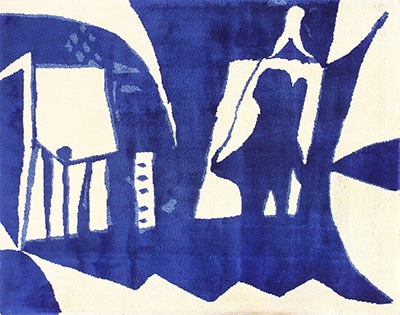
Rugs As Artistic Wall Hangings
Indeed, when Oriental rugs were first imported to Europe they were considered too precious to be walked on, but were used instead as tablecloths.
As an example, the leather couch for the patients in Sigmund Freud’s famous office in Vienna was covered by his prized Qasghai rug. Many people throughout the years have been using rugs as wall hangings and view them as prized textile art pieces.
While rugs might be considered to be “pricey”, they are nowhere near the price points that paintings are. For a fraction of the price that a great master painting might cost, people could acquire textiles and rugs that have the same, if not more, of an artistic impact. View our Consumer Guide to Buying Oriental Rugs to learn more.
If you enjoyed this post you may want to look up some of our other posts:
Learn about: Historical Biblical Tapestries | What Are Historical Tapestries? | Gobelin Tapestry History| Kesi: The History of the Chinese Tapestry | History of the Bayeux Tapestry | William Baumgarten & The Aubusson Tapestries | History of the Beauvais Tapestries | Barberini Tapestries Reborn from the Ashes | Green Tapestries Vogue 2017 Home Decor | Alighiero Boetti Tapestries
This rug blog about antique tapestries and their history was published by Nazmiyal Antique Rugs which is located in the heart of Manhattan New York City.


